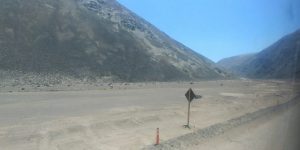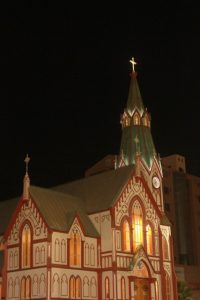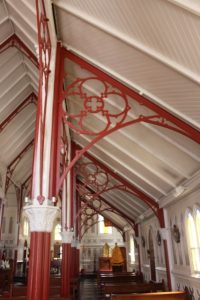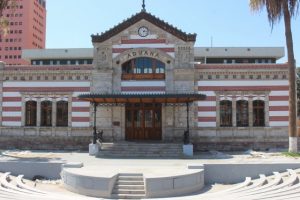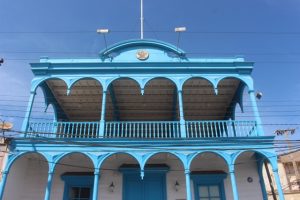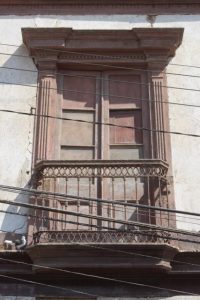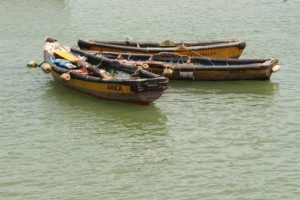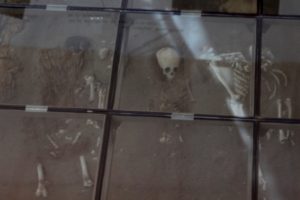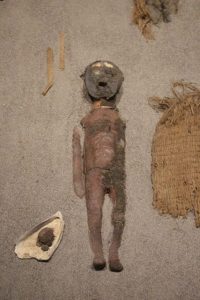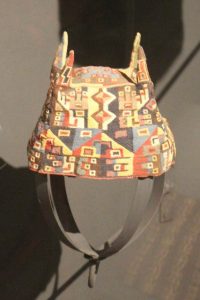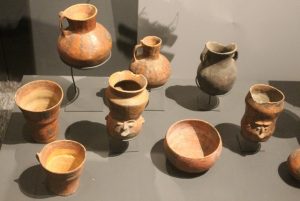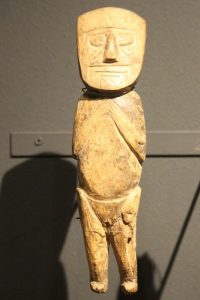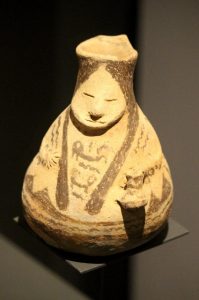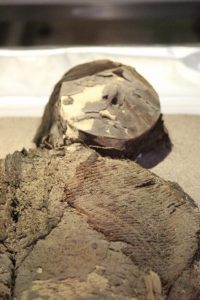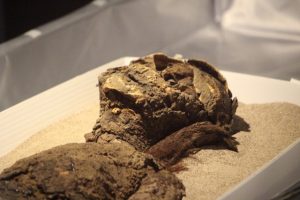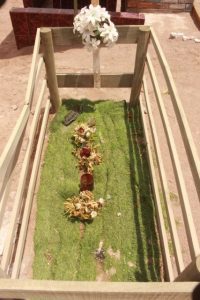The northermost Chilean town, Arica, is another harbour, and not very pretty, but it holds an impressive collection of Chinchorro mummies in several museums nearby.
Luckily for us, the road to Arica is open again, with an emergency bridge covering the river. So down we go, along the Panamericana, towards our last destination in Chile.
One of the things I haven’t mentioned yet – and I have also not extensively photographed – are the hundreds, no, thousands of crosses and shrines that have been erected along the motorway, obviously victims of traffic incidents. And it is not that the Chileans are irresponsible drivers, on the contrary, they mostly stick to the maximum speed, they do not overtake in blind corners. I suppose it is the design of the motorway that demands its toll. Especially nearer to Santiago and La Serena, where the Panamericana is a four-lane dual carriageway, around bus stops wooden steps have been installed for people to easily cross the guard rails on the central reservation – essentially inviting them to cross the motorway. The other thing that doesn’t help is that the motorway is also frequently used by cyclist. Many of the shrines have been adorned with items that identify with the victim, and in quite a few cases a bicycle is mounted on top. Others sport miners’ helmets, for instance. The crosses and shrines are extensively decorated, with plastic flowers, flags – often the Chilean flag -, and they are very well maintained, obviously family return often to the place of the accident. Here, further north, the Panamericana is just a two-lane road, but with no less crosses and shrines, sometimes a whole bunch together. A very sad element of the highway environment.
Near Arica we get a good view of the damage caused by the floods. The river has subsided again, but whole parts of the road have been washed away. Equipment has been mobilised to repair this important connection as soon as possible.
Arica itself is actually not particularly attractive, contrary to what many Chileans made us believe. The most interesting building is another church, designed by Gustave Eiffel, and unlike the one in Coquimbo – which was all corrugated iron plates -, this one is a much larger church, they even call it cathedral, which has Eiffel tower-like construction elements inside. The church was prefabricated in France, and assembled by the Peruvians in 1876, just a few years before the War of the Pacific. When Chilean forces attacked, the Peruvians threw away the special assembling key, to prevent the Chileans from dismantling the church and take it away as a war trophy; instead, they took the whole town!
The harbour is always attractive, with multicolour fishing boats, the fish market, and an incredible number of pelicans and sea lions. Why there are so many we only find out when one of the fisherman stalls disposed of the offal, in no time ransacked by the pelicans – until it is thrown into the harbour, and the sea lions take over. Your average seagull doesn’t stand a chance.
Arica also has a small museum with 48 Chinchorro mummies. The Chinchorros were a fishing community that lived in this region from around 7000-1500 BC, so quite a long time ago. What makes them unique is their habit of mummifying their dead, they did this well before the Egyptians even thought about it. The lack of rain, and the extremely dry air helped, of course. At the site of the museum a hotel was being built, when workers came across an ancient burial site. This turned out to be a Chinchorro site, so fragile that the idea of a hotel was blown off, and a museum was built instead, over the mummies. Now you can walk across a thick glass plate, under which a collection of bones, cloths and indeed mummies can be observed, like they were buried, and later on discovered.
A much better museum is just outside town, in the Azapa Valley near the village of San Martin de Azapa. Here is the fabulous Archaeological Museum, furnished by the local university. The museum has a much larger collection of mummies, also of children and even embryos, very well displayed: it sounds morbid, but it is really fascinating. A small number, maybe fifteen or so, are exhibited, but in a back room there are I don’t know how many more, perhaps a hundred, kept in metal boxes, behind a glass wall. Besides, the museum has a large assortment of ceramics embroidered tapestries from the superseding culture, the Tiwanaku, relatively recent with only 2000 years old.
Coincidentally, no doubt, not far away from the museum is the present-day dessert cemetery, which is of interest because off the incredible, colourful decorations of many of the graves and tombs, with plastic flowers. Not so different, come to think of it, from the individual crosses and shrines along the motorway.
next: we also experienced carnival in Arica

